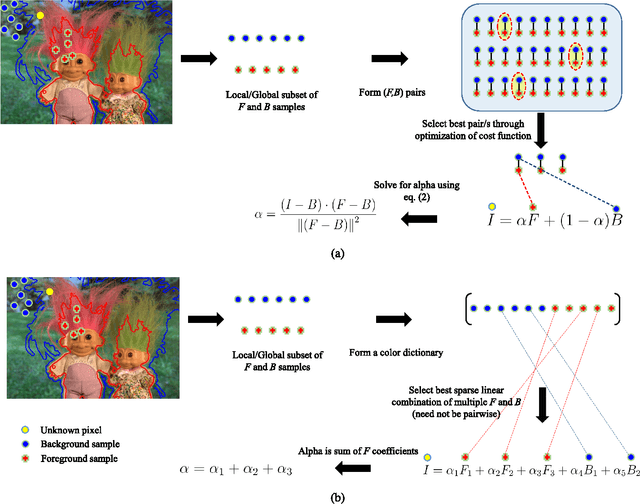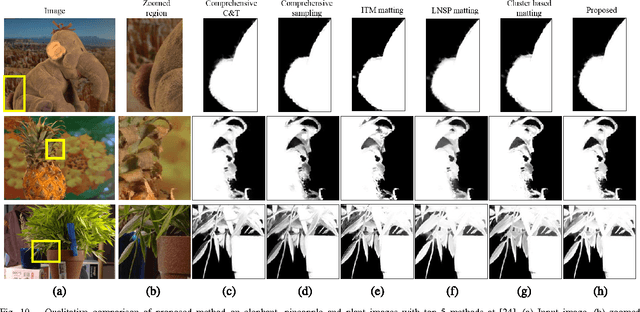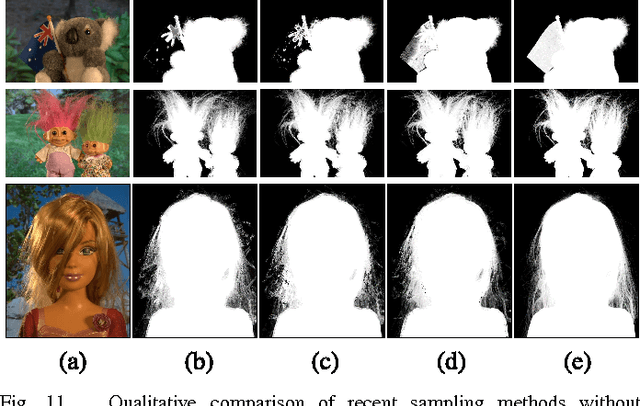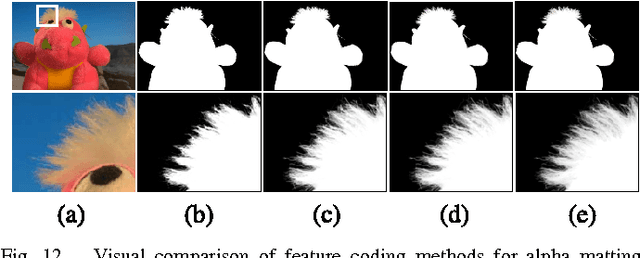Ehsan Shahrian Varnousfaderani
Sparse Coding for Alpha Matting
Apr 11, 2016



Abstract:Existing color sampling based alpha matting methods use the compositing equation to estimate alpha at a pixel from pairs of foreground (F) and background (B) samples. The quality of the matte depends on the selected (F,B) pairs. In this paper, the matting problem is reinterpreted as a sparse coding of pixel features, wherein the sum of the codes gives the estimate of the alpha matte from a set of unpaired F and B samples. A non-parametric probabilistic segmentation provides a certainty measure on the pixel belonging to foreground or background, based on which a dictionary is formed for use in sparse coding. By removing the restriction to conform to (F,B) pairs, this method allows for better alpha estimation from multiple F and B samples. The same framework is extended to videos, where the requirement of temporal coherence is handled effectively. Here, the dictionary is formed by samples from multiple frames. A multi-frame graph model, as opposed to a single image as for image matting, is proposed that can be solved efficiently in closed form. Quantitative and qualitative evaluations on a benchmark dataset are provided to show that the proposed method outperforms current state-of-the-art in image and video matting.
 Add to Chrome
Add to Chrome Add to Firefox
Add to Firefox Add to Edge
Add to Edge